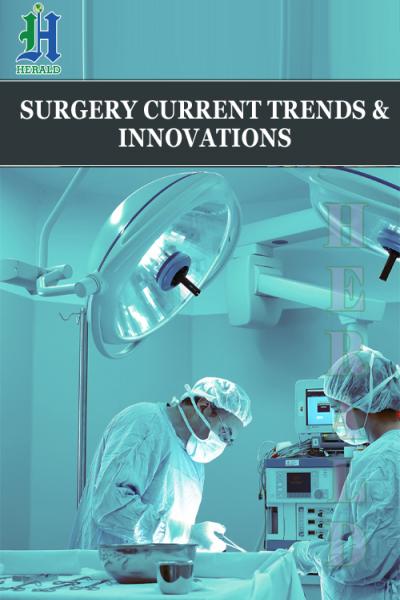
Journal of Surgery Current Trends & Innovations Category: Clinical
Type: Editorial
Marfan Syndrome and Dsyphagia Lusoria: The Hustle
*Corresponding Author(s):
Nicola MarzilianoLaboratory Of Clinical Pathology Asl Taranto, San Marco Hospital, Grottaglie, Italy
Tel:+39 0264447470,
Email:nicola.marziliano@unimol.it
Received Date: Aug 27, 2019
Accepted Date: Aug 27, 2019
Published Date: Sep 03, 2019
EDITORIAL
To date, over 200 Heritable Connective Tissue Disorders (HCTD) have been described, affecting connective tissue of various organ systems, including bones, eyes, skin, joints, lungs, heart and blood vessels. Among those, Marfan Syndrome (MFS), Ehlers-Danlos Syndrome (EDS), and Loeys-Dietz Syndrome (LDS) are examples of HCTD that show some clinical overlap regarding skeletal, craniofacial, ocular, cutaneous features and most important cardiovascular manifestations. Arterial tortuosity and other vascular anomalies are prominent in these clinical conditions (mostly in LDS) and prominently affect the vessels of the head, neck and aorta but also affect other thoracic and abdominal arteries or can even be generalized [1].
Aberrant Right Subclavian Artery (ARSA) or Arteria Lusoria (AL) is the most common congenital aortic arch anomaly occurring in less than 1-2% of the general population. A right ASA typically occurs in a normal (left) aortic arch and arises as the fourth supra-aortic vessel from the distal arch). Due to this left-sided origin, the artery crosses the posterior mediastinum to reach the right arm. Similarly, a left ASA arises as the last branch from a right aortic arch, crossing the mediastinum to reach the left arm. Clinically, the aberrant, usually retro-oesophageal course of the artery, may be associated with dysphagia or respiratory symptoms (dyspnoea), although the majority of the affected adults is asymptomatic [2]. Although pharingeal symptoms are not generally considered a main feature of Marfan syndrome, many patients have a degree of underlying pharyngeal pathologies. Dysphagia Lusoria (DL) is a rare condition that might overlap with MFS due to vascular abnormalities.
Thus the combination of a rare genetic condition such as MFS together with DL represents per se a extremely rare clinical condition. The authors of the article entitled “Hybrid Endovascular Repair for Dysphagia Lusoria in a Patient with Marfan Syndrome” addressed this coincident finding by means of extremely informative imaging approach (contrast CTA scanning) that guided a carotid artery transposition and a ValiantTM (Medtronic) device positioning in order to cover the origin of the aberrant subclavian artery [3].
This is the strength of the present paper: The association of MFS with DL elegantly treated with the ValiantTM device.
It might seems a that this paper is intended for a niche audience due to the combinations of MFS and DL; however such as papers should serve for future cases presentations and, if still needed, support the importance of a proper imaging pre-study when approaching rare inherited/genetic conditions with surgery.
Aberrant Right Subclavian Artery (ARSA) or Arteria Lusoria (AL) is the most common congenital aortic arch anomaly occurring in less than 1-2% of the general population. A right ASA typically occurs in a normal (left) aortic arch and arises as the fourth supra-aortic vessel from the distal arch). Due to this left-sided origin, the artery crosses the posterior mediastinum to reach the right arm. Similarly, a left ASA arises as the last branch from a right aortic arch, crossing the mediastinum to reach the left arm. Clinically, the aberrant, usually retro-oesophageal course of the artery, may be associated with dysphagia or respiratory symptoms (dyspnoea), although the majority of the affected adults is asymptomatic [2]. Although pharingeal symptoms are not generally considered a main feature of Marfan syndrome, many patients have a degree of underlying pharyngeal pathologies. Dysphagia Lusoria (DL) is a rare condition that might overlap with MFS due to vascular abnormalities.
Thus the combination of a rare genetic condition such as MFS together with DL represents per se a extremely rare clinical condition. The authors of the article entitled “Hybrid Endovascular Repair for Dysphagia Lusoria in a Patient with Marfan Syndrome” addressed this coincident finding by means of extremely informative imaging approach (contrast CTA scanning) that guided a carotid artery transposition and a ValiantTM (Medtronic) device positioning in order to cover the origin of the aberrant subclavian artery [3].
This is the strength of the present paper: The association of MFS with DL elegantly treated with the ValiantTM device.
It might seems a that this paper is intended for a niche audience due to the combinations of MFS and DL; however such as papers should serve for future cases presentations and, if still needed, support the importance of a proper imaging pre-study when approaching rare inherited/genetic conditions with surgery.
REFERENCES
- Meester JAN, Verstraeten A, Schepers D, Alaerts M, Van Laer L, et al. (2017) Differences in manifestations of Marfan syndrome, Ehlers-Danlos syndrome, and Loeys-Dietz syndrome. Ann Cardiothorac Surg 6: 582-594.
- Mccallen AM, Schaff B (1956) Aneurysm of an anomalous right subclavian artery. Radiology 66: 561-563.
- Stone WM, Ricotta JJ, Fowl RJ, Garg N, Bower TC, et al. (2011) Contemporary management of aberrant right subclavian arteries. Ann Vasc Surg 25: 508-514.
Citation: Marziliano N, Medoro A, Folzani S, Reverberi C, Intrieri M (2019) Marfan Syndrome and Dsyphagia Lusoria: The Hustle. J Surg Curr Trend Innov 3: 018.
Copyright: © 2019 Nicola Marziliano, et al. This is an open-access article distributed under the terms of the Creative Commons Attribution License, which permits unrestricted use, distribution, and reproduction in any medium, provided the original author and source are credited.

Journal Highlights
© 2026, Copyrights Herald Scholarly Open Access. All Rights Reserved!
